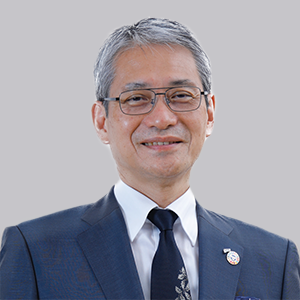News
Article
Satsuma Resubmits NDA Over STS101 Nasal Powder for Acute Migraine Treatment
Key Takeaways
- Satsuma Pharmaceuticals resubmitted the NDA for STS101 after addressing FDA's formulation-related concerns from a previous CRL.
- The FDA had no issues with clinical trial results or safety, not requiring additional trials.
STS101 showed promising results in previous trials, with significant pain relief and minimal adverse events reported, reinforcing its potential as a viable treatment for patients with migraine.
Ryoichi Nagata, MD, PhD, FFPM
(Credit: Satsuma Pharmaceuticals)

After the FDA issued a complete response letter (CRL) in January, Satsuma Pharmaceuticals has resubmitted its new drug application (NDA) for its investigational candidate STS101, a dihydroergotamine (DHE) nasal powder, for the treatment of patients with acute migraine with or without aura. Following a positive Type A meeting, Satsuma and its corporate parent, Shin Nippon Biomedical Laboratories, believes the NDA resubmission will address all outcomes in the CRL.1
"The resubmission of the STS101 NDA resubmission is a critical step in our mission to bring this unique and new therapy to patients experiencing migraine who often have inadequate treatment options," Ryoichi Nagata, MD, PhD, FFPM, the president and CEO at Satsuma, said in a statement.1
In the prior CRL, the FDA noted no concerns related with the clinical trial results, including the safety of STS101, and did not request additional clinical trials. However, the agency provided additional comments primarily related to formulation (Chemistry, Manufacturing, and Control - CMC). The company noted that it will engage in discussions with the agency promptly and consider reapplying for market approval.2
The therapy’s original new drug application was supported by data from a phase 1 comparative pharmacokinetic and safety trial (NCT03874832) and the phase 3 ASCEND trial (NCT04406649). Although not required for the application, the results from the phase 3 SUMMIT trial (NCT04406649) were also considered. The application was accepted for review in late May 2023.3
The ASCEND trial was a multicenter, open-label, safety trial that included 480 individuals, of whom 466 self-administered at least 1 dose of STS101Mk1 (which incorporated a first-generation delivery device) or STS101, with Satsuma completing a transition of study medication from STS101Mk1 to STS101 in the first half of 2021. No clinically relevant nasal safety or tolerability findings, systemic safety findings, or unexpected treatment-related serious adverse events (AEs), were reported among patients on STS101 (n = 344), and only 4.1% of individuals cited an AE as the reason for discontinuing participation in the trial.4
Among 172 trial participants exclusively treated with STS101, freedom from pain by 2 hours post-treatment was achieved for 34.2% of all treated attacks, while freedom from MBS at this time point was achieved in 53.4% of all treated attacks. In more than 81% of treated attacks, individuals did not report utilizing an allowed second dose of STS101 within 48 hours of administering the first dose. In the trial, patients could administer up to 2 doses of 5.2 mg of the treatment in a pro re nata fashion within 24 hours of migraine attack. A maximum of 12 doses per month could be used for up to 1 year, across 11 study visits. Otherwise, the participants were limited to the use of 2 or fewer other migraine treatments. The mean age of patients was 39 years (±11), with 89% of the cohort being women, and 84% being Caucasian.
Throughout the study period, 7.3% (n = 20) of the cohort discontinued treatment because of AEs, including 2.9% (n = 8) who experienced nasal AEs. Nasal discomfort (13.9%), dysgeusia (7.7%), and nasal congestion (6.2%), were among the most commonly reported AEs, while postural orthostatic tachycardia syndrome and cholecystitis—considered serious AEs—were observed in 1 individual each, and were not deemed related to the study treatment. No differences in AE rates or severity were observed when the optimized STS101 device was introduced midway through the study.




